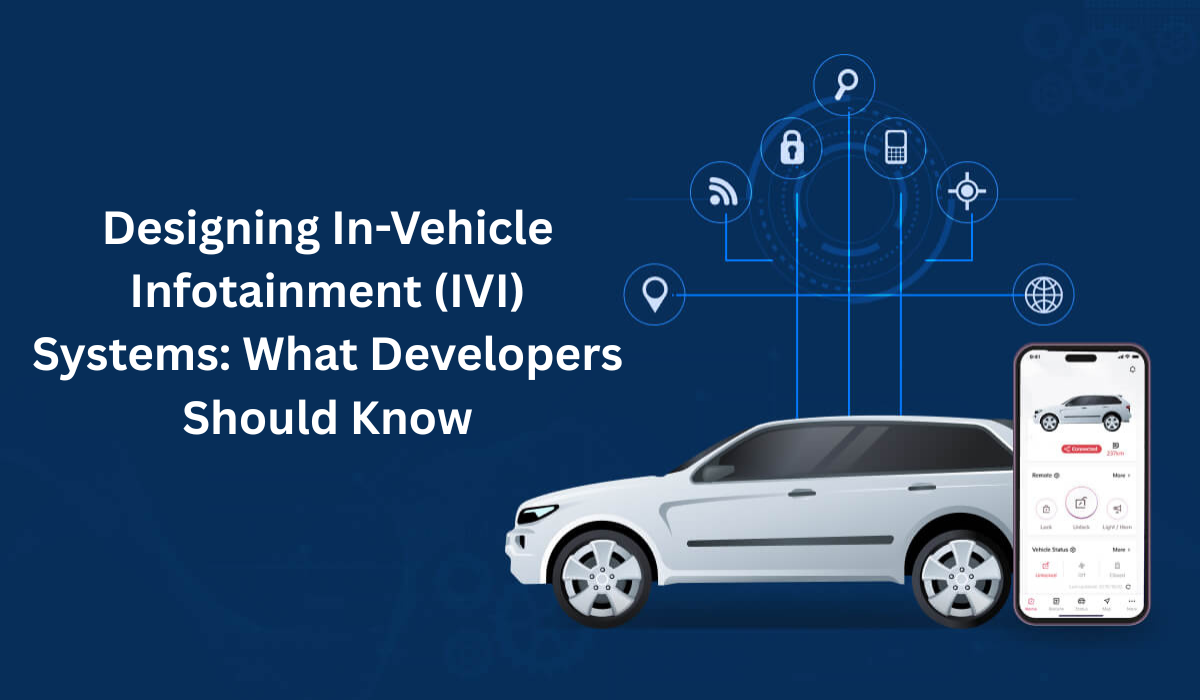Designing In-Vehicle Infotainment (IVI) Systems: What Developers Should Know

Strong 8k brings an ultra-HD IPTV experience to your living room and your pocket.
In the evolving landscape of the automotive industry, technology is playing a pivotal role in enhancing the overall driving experience. One of the most significant technological advancements in modern vehicles is the integration of In-Vehicle Infotainment (IVI) systems. These systems combine entertainment, navigation, communication, and vehicle information into one cohesive interface that is becoming a standard feature in most new vehicles.
For developers and businesses aiming to innovate in this space, understanding the essentials of IVI system design is crucial. Whether you're an automotive software development company or an individual developer, delivering high-quality, user-friendly, and secure infotainment experiences requires a strategic approach.
What Are In-Vehicle Infotainment (IVI) Systems?
An IVI system is a centralized digital interface in a vehicle that provides access to entertainment media (radio, music, video), navigation, smartphone integration (via Apple CarPlay, Android Auto), voice controls, climate settings, and vehicle diagnostics. These systems are usually accessible via touchscreens, steering wheel controls, or voice commands.
As automotive software continues to mature, IVI systems are evolving from basic media controls to full-fledged smart dashboards powered by AI, machine learning, and real-time cloud connectivity.
Key Considerations When Designing IVI Systems
1. User Experience (UX) & Interface Design
When developing IVI systems, the user interface must be intuitive, minimalistic, and distraction-free. Drivers should be able to access key features with minimal effort, ensuring safety and convenience. Good UI/UX design prioritizes large touch targets, voice interactions, dark mode for night driving, and fast response times.
Custom automotive software development should include thorough UX research to ensure that the design aligns with user behavior inside the vehicle environment.
2. Real-Time Performance and Responsiveness
An IVI system must deliver real-time performance. Whether it's GPS navigation, Bluetooth calling, or switching between apps, latency can negatively impact user satisfaction—and in some cases, safety. Optimizing system resources, using low-latency frameworks, and testing across edge cases are essential tasks for any automotive software development company.
3. Hardware Integration
The software must work seamlessly with various in-vehicle hardware components like GPS, sensors, cameras, microphones, and speakers. Developers should collaborate with hardware engineers to understand compatibility requirements and build scalable integrations.
4. Cross-Platform Compatibility
Modern IVI systems need to support Android Auto, Apple CarPlay, and even proprietary OS platforms used by car manufacturers. This means developers should be adept at custom automotive software development across multiple platforms and screen sizes.
Features Every IVI System Should Have
A robust IVI solution should include the following features:
GPS Navigation with Real-Time Traffic
Media & Entertainment (Streaming, Radio, Bluetooth)
Smartphone Integration
Voice Recognition & Virtual Assistant
Vehicle Diagnostics (Fuel, Tire Pressure, Engine Health)
Climate Control Interface
Over-the-Air (OTA) Updates
Cloud Backup & Sync
Providing all these features under one cohesive design can make or break the success of an IVI system.
Challenges in Developing IVI Systems
1. Security and Data Privacy
Automotive software is a frequent target for cyber threats. Protecting user data and securing access to vehicle systems is paramount. This involves encryption, secure firmware updates, and compliance with privacy regulations like GDPR.
A reliable automotive software development solution should incorporate security layers from the initial stages of development.
2. Compliance and Standardization
Developers must ensure compliance with automotive standards such as AUTOSAR, ISO 26262 (functional safety), and ASPICE. An experienced automotive software development company can help navigate these standards while ensuring the application passes industry certifications.
3. Connectivity Issues
Since many IVI features rely on real-time connectivity (maps, media streaming, OTA updates), handling offline scenarios and minimizing app crashes is critical.
Technologies Powering Modern IVI Systems
Developers should be familiar with the following technologies when building IVI systems:
Embedded Linux or QNX for real-time operating systems
Flutter, React Native, or Qt for UI development
CAN (Controller Area Network) for communicating with in-car modules
AI and Natural Language Processing for voice assistants
Cloud services like AWS or Azure for storage and analytics
By leveraging these tools, automotive software development services can ensure scalable, future-ready infotainment systems.
Customization for OEMs and End Users
Automakers often want tailored IVI solutions that reflect their brand identity. From custom animations and color schemes to unique voice assistants, personalization is a significant differentiator. Custom automotive software development allows companies to deliver unique experiences that set their vehicles apart.
Developers should also consider giving users control over their interface preferences such as theme selection, widget rearrangement, or notification settings.
Why Partner with an Automotive Software Development Company?
Building a robust IVI system from scratch is complex and time-consuming. Collaborating with a seasoned automotive software development company ensures:
Faster time to market
Expertise in hardware-software integration
Proven methodologies and frameworks
Post-launch support and maintenance
Compliance with industry standards
Such companies also offer end-to-end automotive software development services, from design and prototyping to testing and deployment.
Conclusion
Designing a high-performing IVI system isn’t just about loading features into a car dashboard—it’s about creating an experience that merges safety, technology, and personalization. With rising consumer expectations and competition in the automotive market, investing in quality automotive software development solutions has become a necessity rather than an option.
Whether you're an automaker or a tech innovator, working with an experienced automotive software development company can help you bring cutting-edge infotainment systems to life. The key lies in understanding the user, integrating seamlessly with vehicle hardware, and delivering a reliable, delightful interface that enhances the driving experience.
Note: IndiBlogHub features both user-submitted and editorial content. We do not verify third-party contributions. Read our Disclaimer and Privacy Policyfor details.







